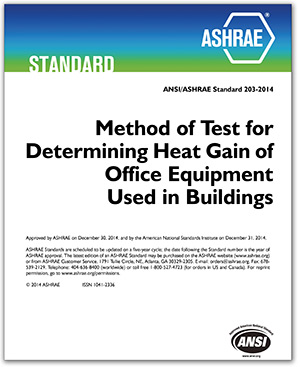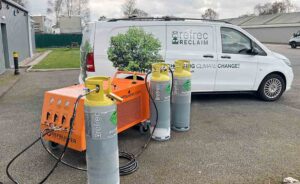Determining office equipment heat gains
12th May 2015 USA: To assist in cooling load calculations, ASHRAE has developed a test method for determining office equipment heat gains.
USA: To assist in cooling load calculations, ASHRAE has developed a test method for determining office equipment heat gains.
The growing use of plug loads in buildings as well as insufficient data on how much energy they generate presents a challenge to engineers in determining how to best cool a building.
Guidance to meet that challenge is contained in a newASHRAE standard. ASHRAE/ANSI Standard 203-2014, Method of Test for Determining Heat Gain of Office Equipment Used in Buildings, prescribes methods of test to determine the range and average operating heat gains of electrical equipment for use in cooling load calculations. The standard applies to plug-load type electrical equipment.
Plug loads (computers, monitors, printers, projectors, etc) are estimated to use between 20 to 50% of building energy use. They have evolved to become a larger percentage of a building’s overall heat.
According to Glenn Friedman, chair of the Standard 203 committee, two factors are responsible for the increased heat load – a much larger number of computers in buildings and advances in building techniques that have improved envelopes and reduced that portion of load/energy use
“Most plug loads operate at a fraction of their nameplate electrical load, so, as a result, produce significantly less heat load than engineers may use in their cooling load calculations based on those nameplate values,” he said. “This can result in oversizing of air conditioning equipment, resulting in extra initial cost for that equipment as well as higher operating cost.”
Friedman noted that engineers face several challenges when it comes to determining heat gain of equipment. Since there are no standards for establishing how the power consumption or heat rejection data or various plug loads is determined, it is difficult for engineers to accurately use this data in their cooling load calculations.
ASHRAE has funded research to develop a test method and measure plug load type equipment heat rejection. In addition, plug load type equipment is an ever evolving market, so equipment design changes frequently and requires new testing for power consumption and generation of heat rejection data for cooling load calculation use.
The cost of Standard 203-2014, Method of Test for Determining Heat Gain of Office Equipment Used in Buildings, is $41 ($35 member). Visit www.ashrae.org/bookstore.







